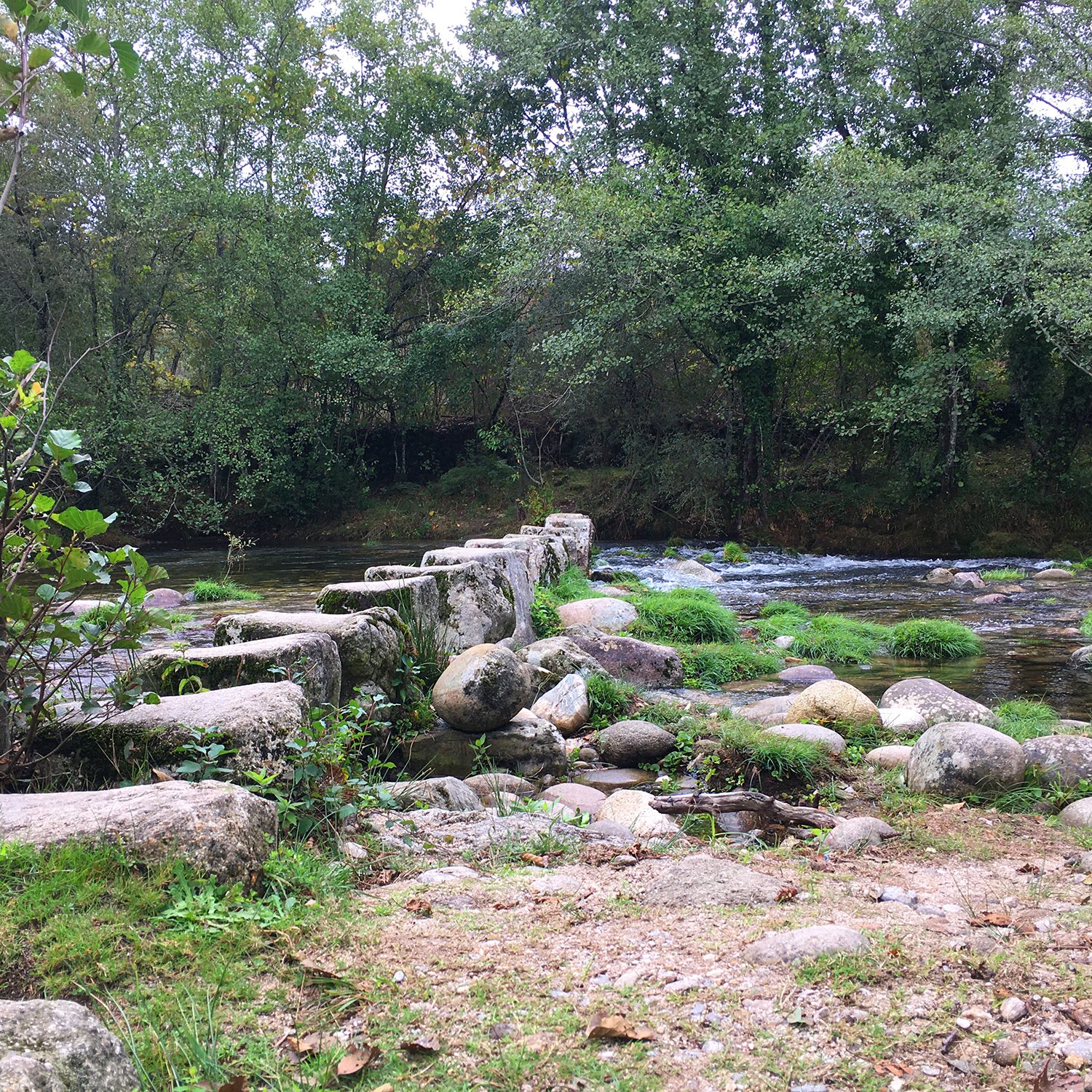Glorious Minho
The river Vez at Arcos de Valdevez. Photo by Filipe Gill
As you discover Portugal, you become aware that, for a small country, it is quite diverse. In this series called “Regions”, we have been to Alentejo and Algarve, and as we leap to the extreme North, we land in Minho, so very different from her two southern sisters.
Minho is where it all started 880 years ago when D. Afonso Henriques (Henry the First, or Henry the Conqueror) began this journey called Portugal when he signed the Treaty of Zamora (Tratado de Zamora) with his cousin Alfonso VII, king of Galicia, Leon and Castilla.
Right there in the heart of Minho in the city of Guimarães, the Cidade Berço.
Geographically, Minho is well defined: to the north, it borders with Spain in the first of our rivers that also gives the name to the region; the Southern border is defined by the river Douro; to the West, the Atlantic Ocean, and to the East, the mountain chain that Minho shares with her sister, Trás-os-Montes.
But what makes this region so special?
It is the greenest of our regions, with plenty of water and beautiful rivers like the Lima. The landscape is hilly, green and intensely populated, home to more than a million ‘Minhotos’.
It has beautiful towns and cities, with mostly well-preserved buildings, made with granite. In the countryside, you will find great ‘Solares’ (historic manor houses) where you can stay and enjoy a genuine experience.
The people are so much more welcoming than in Lisbon, and are generally frank and hospitable. They use what we would call vernaculo – meaning they swear without being offensive – all the time. Very much like their Spanish brothers to the North in Galicia.
And the food? This is where ‘the glorious’ on the title gets the name. You will not starve of interesting and rewarding gastronomic experiences in Minho. Let’s start with the simple things:
Arroz de Forno – oven-crispy rice, cooked to perfection, goes well with everything;
Broa de Milho – Maize, or corn is the main cereal in Minho. The Maize Bread is good on its own, and great with Caldo Verde (see below);
Caldo Verde – The most iconic of Portuguese soups. Please see the article I wrote about it with some notes about to make it.
Then move on to more demanding adventures:
Arroz de Lampreia – This is a special dish. Not to everyone’s taste, but a gastronomic specialty revered all over the country made with a fish caught in the Minho River. More on this dish in a future article here in Gastronautas. Because you need to be one to enjoy this dish!
Rojões à Minhota – a dish made with chunks of pork meat marinated in Vinho Verde and bay leaf. There is more to this dish, and we will come back to it in a it in the future.
Papas de Sarrabulho – A soup made with pig’s blood. Tasty and very nutritious. Normally served with the Rojões. The kind of dish Anthony Bourdain would love.
And something more “normal”:
Vitela Barrosã – This is beef taken from a special breed of cattle near the Serra do Barroso, where it gets its name;
And to finish with a sweet note:
Pudim abade de Priscos – This is lush! Invented by an Abbot – who else – is made with eggs, sugar, Port wine, and pork fat. Go for a long walk along one of the many rivers in Minho after this.
Pudim de Abade de Priscos. Photo by Filipe Gill
Because today is 25 de Abril – 25th of April – we celebrate the Carnation Revolution and “o Dia da Liberdade” (Freedom Day). Our democracy will be 50 next year!
Suggested music: Grândola Vila Morena, by José Afonso
This song is the musical representation of 25 de Abril. It was used as a sign for the troops led by Salgeiro Maia to leave Santarém towards Lisbon to make a Revolution.


